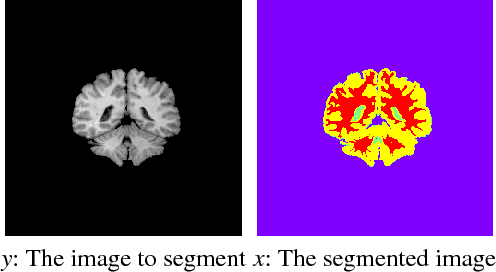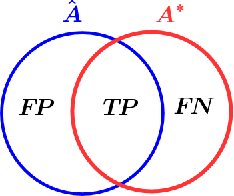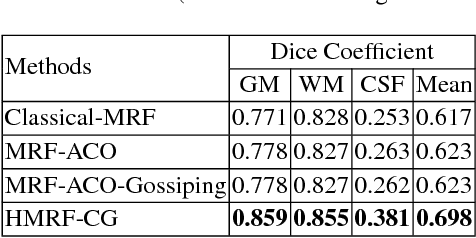Samy Ait-Aoudia
Combination of Hidden Markov Random Field and Conjugate Gradient for Brain Image Segmentation
Mar 13, 2018



Abstract:Image segmentation is the process of partitioning the image into significant regions easier to analyze. Nowadays, segmentation has become a necessity in many practical medical imaging methods as locating tumors and diseases. Hidden Markov Random Field model is one of several techniques used in image segmentation. It provides an elegant way to model the segmentation process. This modeling leads to the minimization of an objective function. Conjugate Gradient algorithm (CG) is one of the best known optimization techniques. This paper proposes the use of the Conjugate Gradient algorithm (CG) for image segmentation, based on the Hidden Markov Random Field. Since derivatives are not available for this expression, finite differences are used in the CG algorithm to approximate the first derivative. The approach is evaluated using a number of publicly available images, where ground truth is known. The Dice Coefficient is used as an objective criterion to measure the quality of segmentation. The results show that the proposed CG approach compares favorably with other variants of Hidden Markov Random Field segmentation algorithms.
Kinship Verification from Videos using Spatio-Temporal Texture Features and Deep Learning
Aug 14, 2017



Abstract:Automatic kinship verification using facial images is a relatively new and challenging research problem in computer vision. It consists in automatically predicting whether two persons have a biological kin relation by examining their facial attributes. While most of the existing works extract shallow handcrafted features from still face images, we approach this problem from spatio-temporal point of view and explore the use of both shallow texture features and deep features for characterizing faces. Promising results, especially those of deep features, are obtained on the benchmark UvA-NEMO Smile database. Our extensive experiments also show the superiority of using videos over still images, hence pointing out the important role of facial dynamics in kinship verification. Furthermore, the fusion of the two types of features (i.e. shallow spatio-temporal texture features and deep features) shows significant performance improvements compared to state-of-the-art methods.
 Add to Chrome
Add to Chrome Add to Firefox
Add to Firefox Add to Edge
Add to Edge